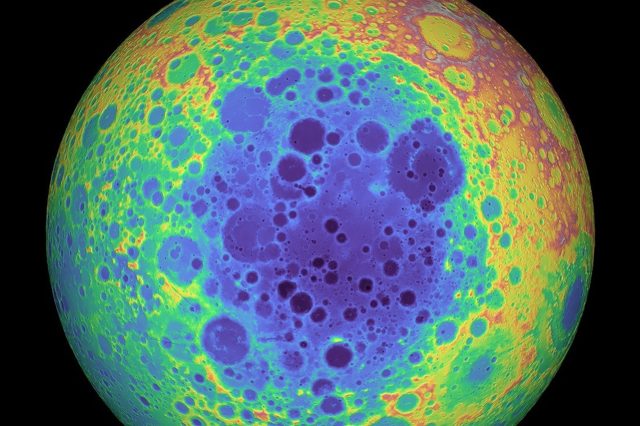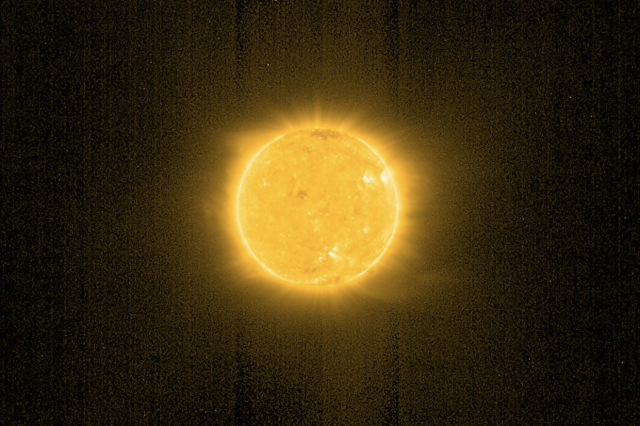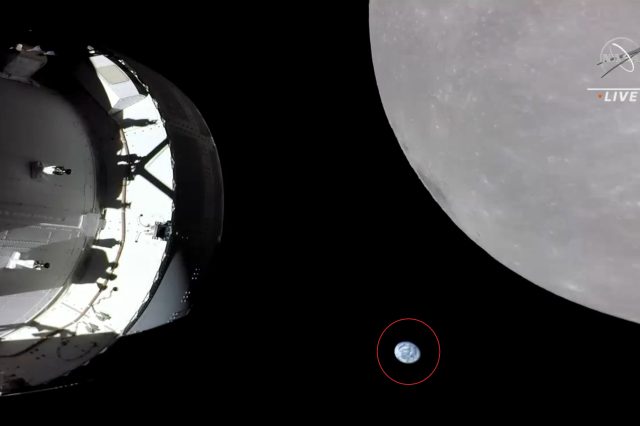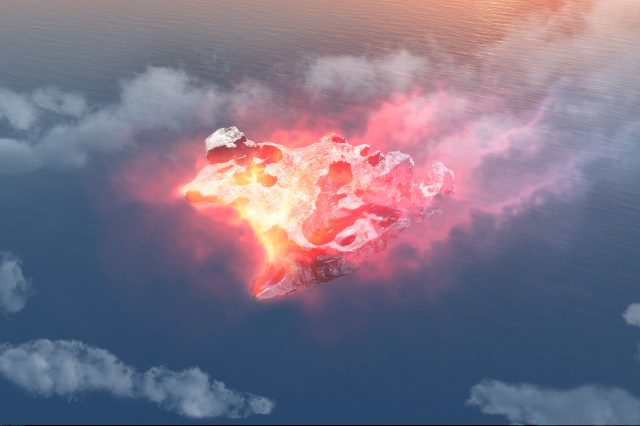The far side of the moon is anything but similar to the near side.
Astronomers have obtained new clues that help unravel the mysteries surrounding the strange asymmetry present on the far side of the Moon. The different distribution of radioactive elements after the catastrophic moon formation collision may help explain the strange asymmetry in the lunar sides’ composition. Earth’s Moon exists so that it has a ‘near side’ that is perpetually oriented towards Earth and a ‘far side,’ which always points away from Earth.
The Moon has a strange asymmetry
The composition of the near side of the Moon is strangely different from its far side. Earth’s Moon is a cold body and features a limited amount of water and little tectonic processes beneath the surface. Scientists currently believe that the Earth-Moon system was formed when a body the size of Mars nicknamed Theia, who in Greek mythology was the mother of Selene, the goddess of the Moon, collided catastrophically with proto-Earth, causing the components of both bodies to mix.
The culprit; a collision?
The debris from this collision is believed to have separated fairly quickly, perhaps over a few million years, to form Earth and the Moon. Earth grew bigger and evolved into a sweet spot in size, resulting in a dynamic planet with an atmosphere and oceans. On the other hand, Earth’s Moon was smaller and did not have enough mass to accommodate the characteristics that make our planet unique.
Discovering the Moon’s history
Decades of observations have shown that lunar history was much more dynamic than expected, with volcanic and magnetic activity occurring just a billion years ago, much later than expected. A clue as to why the near and far sides of the Moon are so different comes from a strong observable asymmetry in its surface characteristics. On the perpetually near-Earth side of the Moon, one can observe dark and light spots with the naked eye on any night or day. The first astronomers called these dark regions ‘maria‘, which in Latin means ‘seas,’ reasoning that they were bodies of water by analogy with Earth.
Volcanic features
Using telescopes, scientists discovered, more than a century ago, that these were not seas but rather craters or volcanic features. However, since the Moon is close to Earth, only about 380,000 km away, it was the first body in the Solar System that humans were able to explore, first using unmanned spacecraft and then up-close, on-site, when Apollo landed the first humans on a cosmic body other than Earth. In the late 1950s and early 1960s, unmanned space probes launched by the USSR returned the first images from the far side of the Moon, and scientists were surprised to discover that the two sides were very different.
The far side, not the “dark side” of the Moon
The far side-often mislabeled as the “dark side,”–had almost no Maria. Only 1% on the far side was covered with Maria compared to 31% for the near side. Scientists were puzzled but suspected that this asymmetry offered clues to how the Moon came to be. In the late 1960s and early 1970s, NASA’s Apollo mission saw six spacecraft land on the lunar surface. Astronauts brought 382 kg of moon rocks to understand the Moon’s origin by analyzing its chemical characteristics. By analyzing the lunar samples, scientists quickly determined that the relative darkness of these patches was due to their geological composition and was attributable to volcanism.
![Lunar Prospector surface thorium concentrations of Lawrence et al. [2003]. Image Credit: AGU.](https://curiosmos.com/wp-content/uploads/2020/06/Lunar-Prospector-surface-thorium-concentrations-of-Lawrence-et-al.-2003..jpg)
Meet Kreep
Scientists also identified a novel type of rock signature called KREEP: short for potassium-enriched rock (chemical symbol K), rare earth elements (REEs, which include cerium, dysprosium, erbium, europium, and other elements that are rare on Earth. ), and phosphorus (chemical symbol P), which was associated with maria. But why volcanism and this KREEP signature should be distributed so unevenly between the near and far sides of the Moon again presented a puzzle.
How the Moon got its weird asymmetry
Using a combination of observation, laboratory experiments, and computer simulations, scientists from the Institute of Earth Life Sciences at the Tokyo Institute of Technology, the University of Florida, the Carnegie Institution for Science, Towson University, NASA Johnson Space Center, and the University of New Mexico have produced some new clues to how the Moon gained its near and far side asymmetry. These tracks are linked to a major KREEP property. Potassium (K), thorium (Th), and uranium (U) are, fundamentally, for this story, radioactively unstable elements.
But what does this mean?
This means that they occur in a variety of atomic configurations that have varying numbers of neutrons. These atoms of variable composition are known as ‘isotopes,’ some of which are unstable and break apart to produce other elements, producing heat. The heat from the radioactive decay of these elements can help melt the rocks in which they are contained, which may partly explain their joint location. This study shows that, besides improved warming, including a KREEP component in rocks reduces their melting temperature, increasing the expected volcanic activity from radiogenic decomposition models.
The Moon’s evolution
Because most of these lava flows were located early in lunar history, this study also adds restrictions on the timing of the Moon’s evolution and the order in which various processes occurred on the Moon. The results of this study, published in Nature Geoscience, suggest that the KREEP-enriched Maria of the Moon has influenced lunar evolution since the Moon formed. “From thermal numerical modeling, we show that radiogenic heating compounds this effect and may have resulted in an asymmetric concentration of post-magma-ocean crust building on the lunar nearside,” the researchers wrote. “Our findings suggest that the nearside geochemical anomaly has influenced the thermal and magmatic evolution of the Moon over its entire post-differentiation history,” scientists concluded.
Join the discussion and participate in awesome giveaways in our mobile Telegram group. Join Curiosmos on Telegram Today. t.me/Curiosmos





